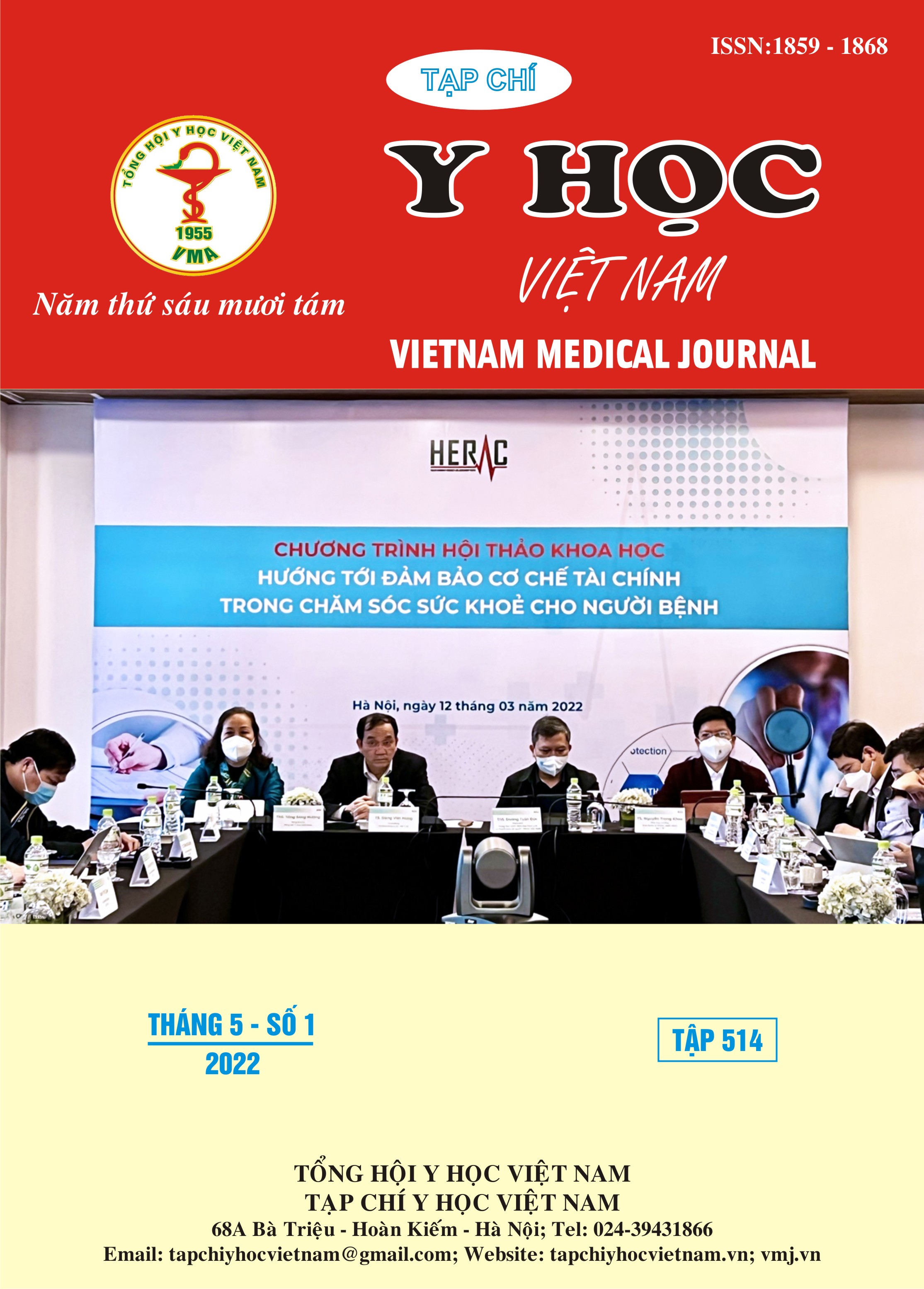CHARACTERISTICS OF ACUTE KIDNEY INJURY IN PATIENTS WITH SEVERE SEPSIS
Main Article Content
Abstract
Objective: to describe characteristics and progression of acute kidney injury in patients with severe sepsis. Subjects and methods: A prospective observational study was conducted in 246 patients with severe seppsis treated at the ICU of Bach Mai hospital. Results: mean age was 61.3 ± 16.22, male accounted for 73.2%, and 42.9% patients were elderly. On admission, heart rate and systolic blood pressure were 118 ±24.1 b/m and 68.1±31.23 mmHg, 88.4% patients were hypotention and 91.1% required mechanical ventilationo. APACHE II score was 23.5±7.41 and average SOFA was 6.8; much higher than those in the patient without AKI (p <0.001). Laboratory abnormalities: mean Hb 107.1 g/L; white blood cells 15.7 G/L; procalcitonin 33 U/L; blood lactate 3.88mmol/L and rhabdomyolysis 32.1%, all were higher than those in the patients without AKI (p <0.001), while blood pH and HCO3- were lower (p <0.001). AKI often occurred after admission 2.3 days, and maximum after 4.5 days. There were 61.6% of patients with more severely kidney damage after admission and 36.6% patients got complete recovery of renal function after treatment. Conclusions: AKI was very common in severe sepsis patients with high motality rate.
Article Details
Keywords
acute renal failure, severe sepsis
References
2. Lê Thị Diễm Tuyết (2010), Nghiên cứu đặc điểm lâm sàng, cận lâm sàng và điều trị suy thận cấp tại khoa Điều trị tích cực bệnh viện Bạch Mai, Luận án tiến sĩ Y học, Trường đại học Y Hà Nội.
3. Tạ Anh Tuấn (2012), Nghiên cứu nguyên nhân, mức độ và vai trò của neutrophil gelatinase associated lipocalin trong thương tổn thận cấp ở bệnh nhi nặng, Luận án tiến sĩ Y học, Trường Đại học Y Hà Nội
4. Ostermann Marlies (2007), “Acute kidney injury in the ICU according to RIFLE”, Critical Care Med, 35(8), 1837-1843.
5. Bellomo R., Ronco C., Kellum J A. (2004),“Acute renal failure – definition, outcome measures, animal models, fluid therapy and information technology needs: the Second International Consensus Conference of the Acute Dialysis Quality Initiative (ADQI) Group”,Critical Care, 8(20), 204-212.
6. Piccinni, P., et al. (2011), "Prospective multicenter study on epidemiology of acute kidney injury in the ICU: a critical care nephrology Italian collaborative effort (NEFROINT)".Minerva Anestesiol 77(11): 1072-1083.
7. Salgado G., et al. (2014), "Acute renal failure according to the RIFLE and AKIN criteria: a multicenter study",Med Intensiva 38(5): 271-277.
8. Dellinger, R. P., et al. (2013), "Surviving Sepsis Campaign: international guidelines for management of severe sepsis and septic shock, 2012",Intensive Care Med 39(2): 165-228.


